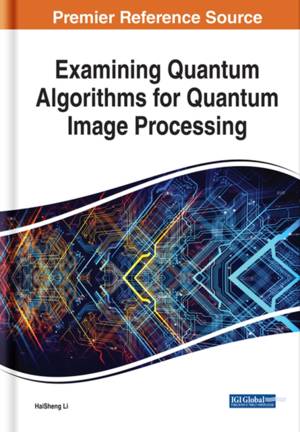
- Afhalen na 1 uur in een winkel met voorraad
- Gratis thuislevering in België vanaf € 30
- Ruim aanbod met 7 miljoen producten
- Afhalen na 1 uur in een winkel met voorraad
- Gratis thuislevering in België vanaf € 30
- Ruim aanbod met 7 miljoen producten
Zoeken
€ 284,95
+ 569 punten
Omschrijving
An emerging interdisciplinary field of study in the realm of academia has been quantum computing and its various applications. The rapid rate of progress of this advancing technology as well as its multi-faceted nature has created a vast amount of potential research material for professionals and students in numerous disciplines. Its specific ability to improve upon traditional algorithms for image processing is seizing the attention of researchers in this field, as there remains a lack of exploration into this precise area. Examining Quantum Algorithms for Quantum Image Processing is an essential reference that provides research on quantum Fourier transform, quantum wavelet transform, and quantum wavelet packet transform as tool algorithms in image processing and quantum computing. It provides a comprehensive look into quantum image algorithms to establish frameworks of quantum image processing. While highlighting topics including geometric transformation, quantum compression ratio, and storage circuits, this book is ideally designed for researchers, scientists, developers, academicians, programmers, practitioners, engineers, and upper graduate students.
Specificaties
Betrokkenen
- Auteur(s):
- Uitgeverij:
Inhoud
- Aantal bladzijden:
- 360
- Taal:
- Engels
Eigenschappen
- Productcode (EAN):
- 9781799837992
- Verschijningsdatum:
- 25/09/2020
- Uitvoering:
- Hardcover
- Formaat:
- Genaaid
- Afmetingen:
- 178 mm x 254 mm
- Gewicht:
- 839 g

Alleen bij Standaard Boekhandel
+ 569 punten op je klantenkaart van Standaard Boekhandel
Beoordelingen
We publiceren alleen reviews die voldoen aan de voorwaarden voor reviews. Bekijk onze voorwaarden voor reviews.








